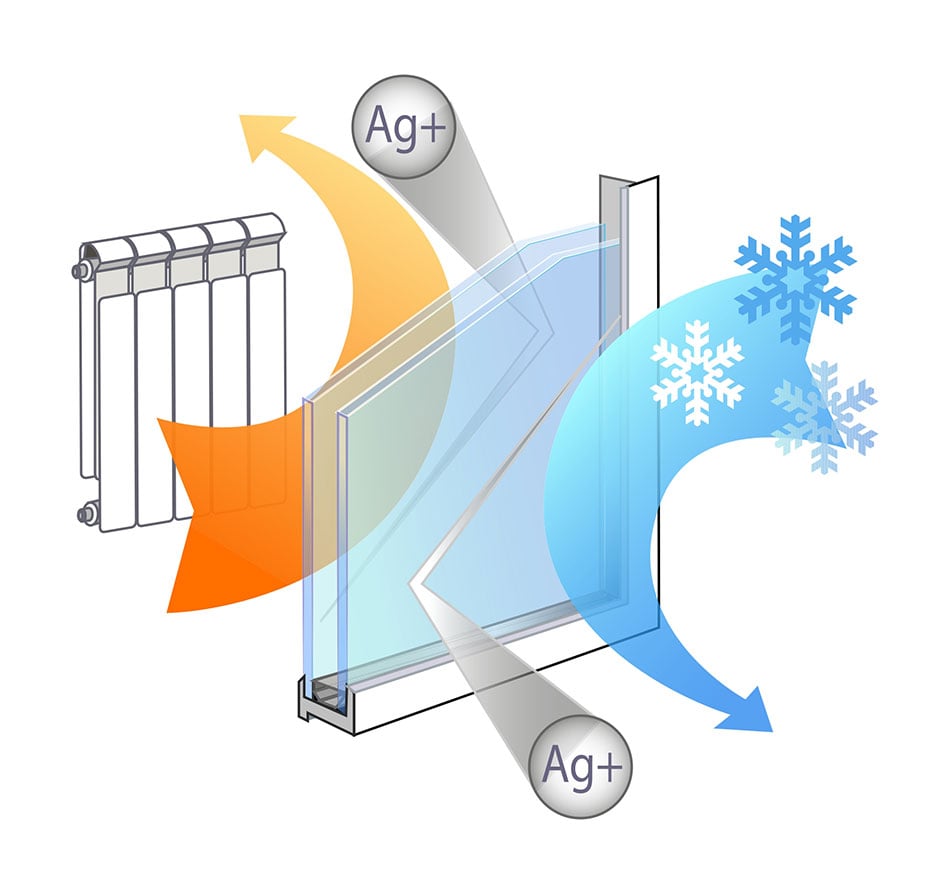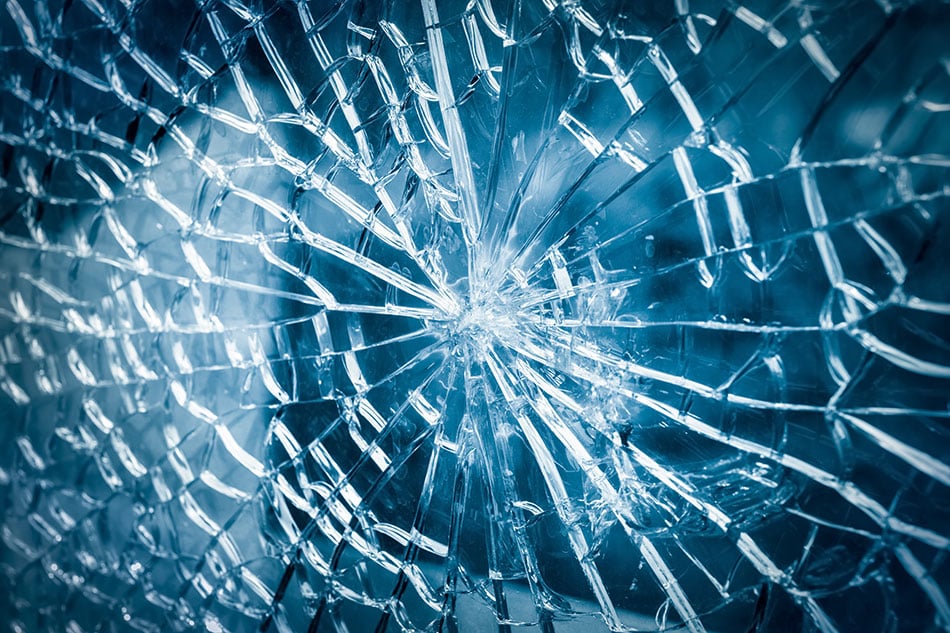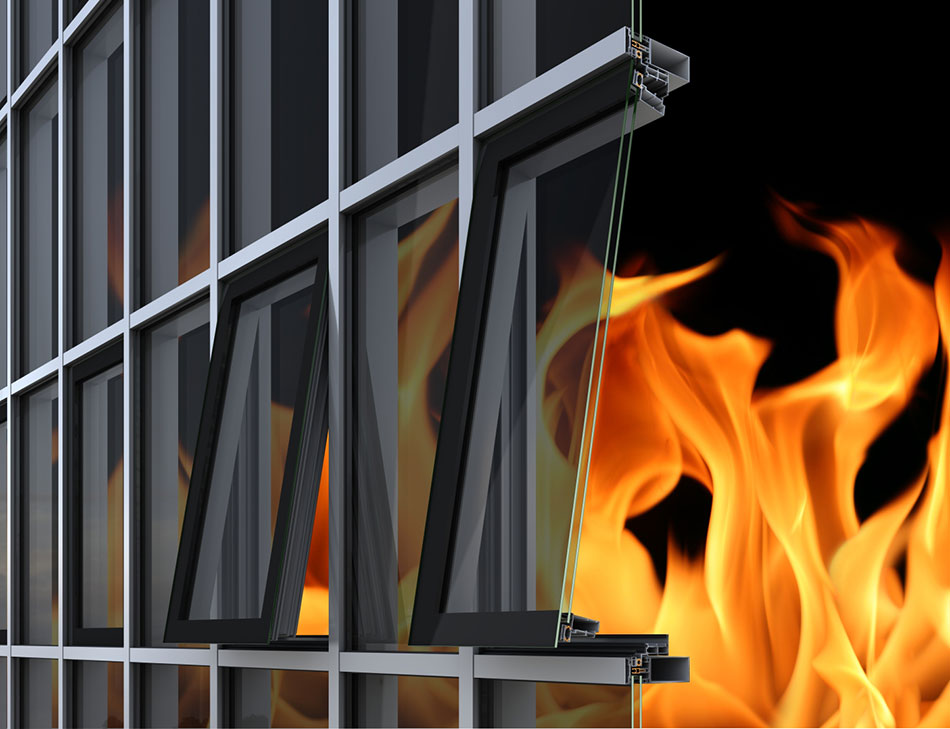Low-E coating is a very thin layer that is applied to the inner surface of the glass on dual- or triple-pane window units. The coating may be invisible to the naked eye, but it is definitely there to offer various advantages.
The coating protects from UV rays that can fade carpets, damage furniture, and even harm your skin and eyes. It also reflects heat during summer by filtering the sun radiation and keeping infrared radiation out.
Furthermore, a special category of Low-E glazing (passive Low-E coatings), contribute to maintaining warm air in your home during winter, functioning in a way which is similar to thermos bottles (vacuum flasks).

Glass Categories with Specific Features

Low-E: Low-Emissivity (Low-E) Window Coating
Safety Glasses
Multipanel or laminated glazing consists of two or more glass panes welded together. One or more special strong binding films (PVB, polyvinyl butyral film), which do not affect the glasses’ clarity are placed between the glass panes.
The film functions as a connective material between the glasses, resulting in a “sandwich” of glasses and films composing a single body, considerably compact and resistant, with increased durability against breaks, high security and enhanced sound reduction. If laminated glass panels break, they won’t shatter, because of the film placed between the panes which holds the broken parts together. In that way, sharp and dangerous edges are avoided in case of broken glasses, which otherwise could cause serious injuries. This is why they are called safety glasses.
The film functions as a connective material between the glasses, resulting in a “sandwich” of glasses and films composing a single body, considerably compact and resistant, with increased durability against breaks, high security and enhanced sound reduction. If laminated glass panels break, they won’t shatter, because of the film placed between the panes which holds the broken parts together. In that way, sharp and dangerous edges are avoided in case of broken glasses, which otherwise could cause serious injuries. This is why they are called safety glasses.
Tempered Glasses
Tempered glasses are thermally processed glasses with higher mechanical and thermal durability. The glass is heated reaching temperatures of up to 600° C and then is rapidly (full tempering) or slowly (thermal amplification) cooled. In both cases, a strictly controlled cautious cooling speed is required.
This processes submits the glass surface under a permanent compression force, providing the glass with special properties, as for example resistance to mechanical or thermal shocks, i.e. up to 5 times higher (thermally tempered) or up to 2 times (thermally amplified) compared to conventional glasses. This process protects the glass from shattering due to high temperature differences taking place on its surface (e.g. because of ever-changing shading).
This is particularly important for glasses exposed to intense sun radiation with high energy absorption on an everyday basis. In addition, in case of breakage, tempered glasses break into small, round glass particles, eliminating the risk of dangerous sharp shards which otherwise would be a serious danger in the case of conventional glasses.
This processes submits the glass surface under a permanent compression force, providing the glass with special properties, as for example resistance to mechanical or thermal shocks, i.e. up to 5 times higher (thermally tempered) or up to 2 times (thermally amplified) compared to conventional glasses. This process protects the glass from shattering due to high temperature differences taking place on its surface (e.g. because of ever-changing shading).
This is particularly important for glasses exposed to intense sun radiation with high energy absorption on an everyday basis. In addition, in case of breakage, tempered glasses break into small, round glass particles, eliminating the risk of dangerous sharp shards which otherwise would be a serious danger in the case of conventional glasses.


Reflecting Glasses
Reflecting glasses reflect a significant amount of sun radiation, reducing to a large extent its entry into the interior. They are a good choice in areas characterized by high sunshine, as they ensure better temperature conditions especially during summer, by preventing excessive heating due to intense sun radiation. However, they will probably cause annoying sunlight reflections on the surrounding environment and buildings.
Fire Resistant Glasses
Fire resistant glasses are distinguished for their resistance against fire, in other words against extremely high temperatures. Depending on their use, they can be single glazed (without spacer) or double glazed with a spacer in between for improved thermal insulation.
The glasses used in fire resistant glasses are always laminated, meaning the incorporate a “sandwich” form, with special expansive films that will expand after reaching a particular high temperature so as to provide enhanced fire resistance. Depending on the time required to delay the entry of fire into the room, someone can choose the most suitable glass category ensuring protection for 30, 60, 90, or 120 minutes. Of course, the glass panel itself is not enough to ensure the required fire protection. The aluminium window or door system in which the glass panel is placed, must also be able to withstand fire accordingly. That is why fire resistant systems are always tested and certified for a specific duration in combination with fire resistant glazing.
The glasses used in fire resistant glasses are always laminated, meaning the incorporate a “sandwich” form, with special expansive films that will expand after reaching a particular high temperature so as to provide enhanced fire resistance. Depending on the time required to delay the entry of fire into the room, someone can choose the most suitable glass category ensuring protection for 30, 60, 90, or 120 minutes. Of course, the glass panel itself is not enough to ensure the required fire protection. The aluminium window or door system in which the glass panel is placed, must also be able to withstand fire accordingly. That is why fire resistant systems are always tested and certified for a specific duration in combination with fire resistant glazing.


